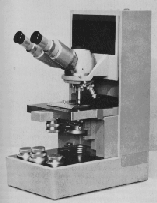
MARINE MICROPALAEONTOLOGICAL METHODS
After studying the stratigraphic record of the area it was found that there
was a change in the abundance of foraminiferal species through time. This
usually indicates a change in environment. The changes in the harbour can
be attributed to the eustatic, isostatic and tectonic events affecting the
area.
Before the Northwest end of the harbour was opened up due to subsidence
of the ocean bottom and sea-level rise, the harbour had a shallow littoral
restricted environment and a low salinity. As sea-level rose, the circulation
in the harbour improved which resulted in a shallow littoral to subtidal
environment with a hgher salinity.

The Foraminiferal species assemblages found throughout the stratigraphic
section at Montague Harbour were all typical of a west coast shallow subtidal
environment.
The stratigraphic section can be broken up into two sections with Biofacies
1 including all samples from the upper part of the section and Biofacies
2 including all samples from the base of the section. The relative abundances
of C.excavatum(Terguem, 1876) were much higher in Biofacies 2 than in Biofacies
1. Since these forams have been known to inhabit areas of lower salinities,
a lower relative salinity can be assumed for the base of the section. This
hypothesis is further supported by B.tenerrima(Bandy,1950) which showed
a distinctly opposite distribution. B.tenerrima is indicative of a higher
salinity environment and was found with a hgher abundance in Biofacies 1.
A study by Patterson and Luternauer(1993) found that abundances of C.excavatum
were inversely related to water salinity compared to B.frigida(Cushman,
1922) and E.hannai(Cushman and Grant,1927). The two latter species were
found in higher abundances in Biofacies 1 which may indicate a higher salinity
environment
Move On
Move Back
Home Page
